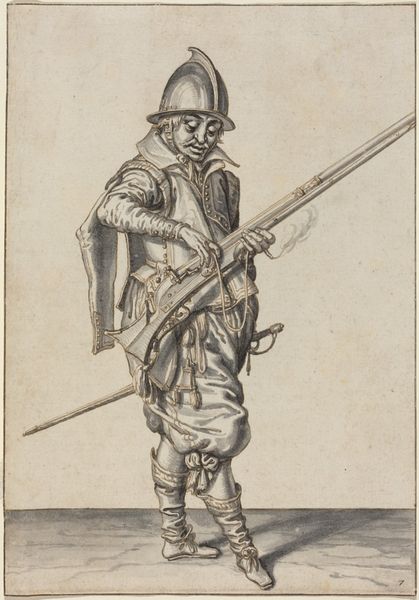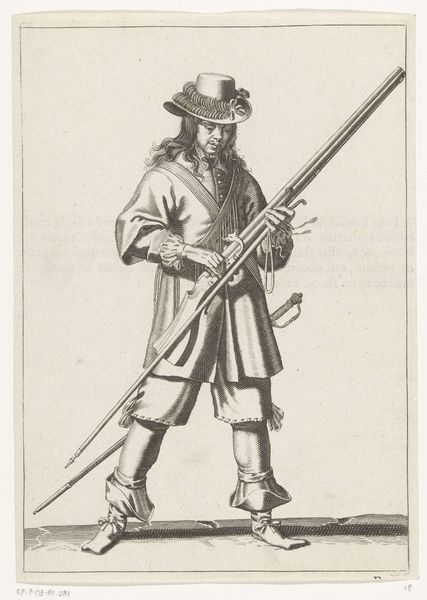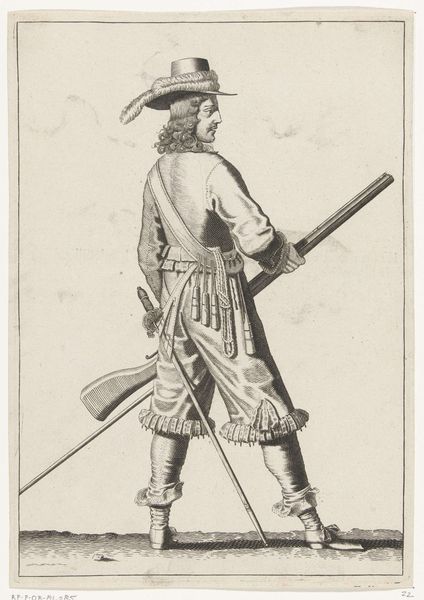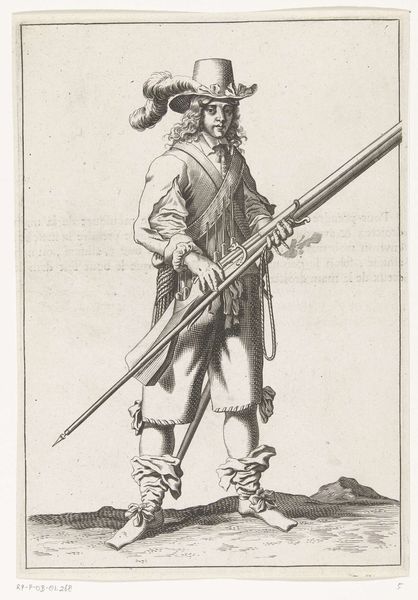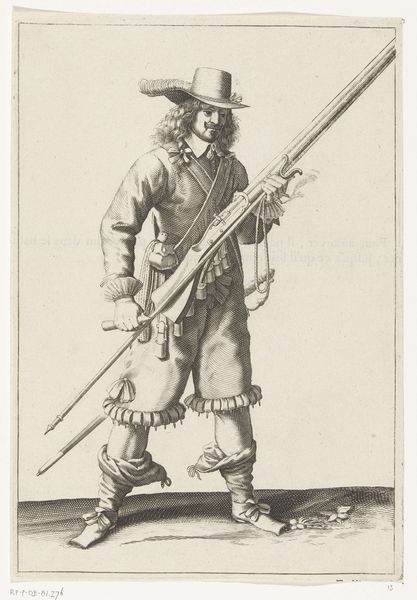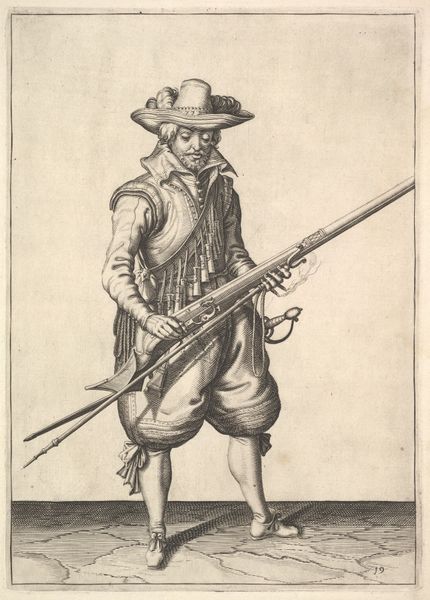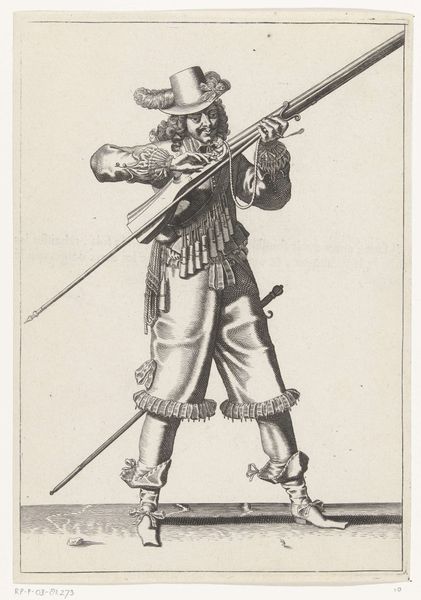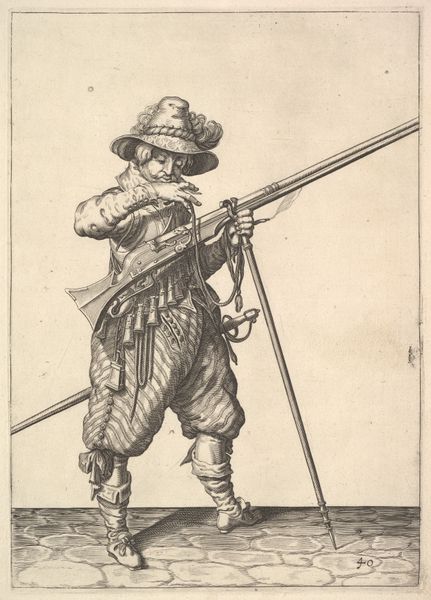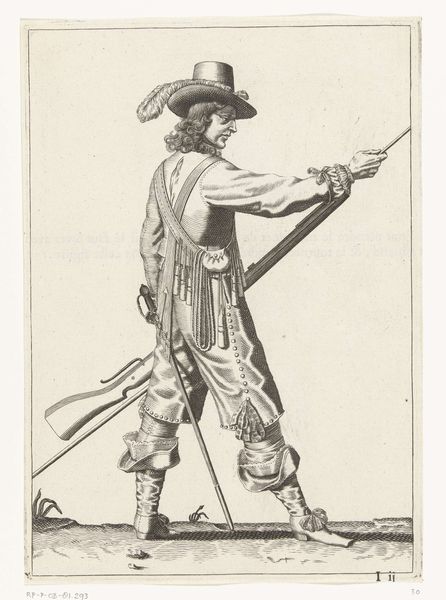
A Walking Musketeer, seen from behind 1610 - 1673
0:00
0:00
drawing, print, ink
#
drawing
#
baroque
# print
#
landscape
#
figuration
#
ink
#
genre-painting
#
sword
Dimensions: 8-1/16 x 6 inches (20.5 x 15.2 cm)
Copyright: Public Domain
Editor: We're now looking at Anthonie Palamedesz's "A Walking Musketeer, seen from behind," likely created sometime between 1610 and 1673. It’s an ink drawing – a simple but evocative image. He seems weighed down by his gear, and vulnerable somehow, seen from behind. What do you make of it? Curator: This drawing offers a glimpse into the visual culture and social anxieties of the 17th century. Genre paintings were gaining popularity, reflecting the everyday life of different social strata. Palamedesz, working in the Dutch Golden Age, presents us with a musketeer. But it's not a glorifying portrait. What kind of statement is being made by depicting him from the back? Editor: It feels… less heroic, maybe? More about the reality of being a soldier than the ideal? Curator: Precisely. Think about the context: the Eighty Years’ War was fresh in collective memory. There’s a normalization, almost a demystification, of military figures happening. Also, consider the market for art. Who were buying these images? Not necessarily the elite, but a growing middle class with different sensibilities. Editor: So, this kind of work reflects a shift in patronage and a different understanding of military life within Dutch society at the time? Curator: Exactly! It challenges the conventional heroic narratives, focusing on the human element and offering a subtle commentary on the socio-political climate. It’s art engaging with the present. Do you think viewing it from this perspective changes your initial read of "vulnerability"? Editor: Absolutely. It feels more knowing, like the artist is subtly undercutting traditional displays of power and strength. I hadn’t considered how much context shapes even a simple image like this. Curator: It’s a valuable reminder that even seemingly straightforward images are embedded in complex webs of social, economic, and political realities. This one drawing really tells you the culture of the time.
Comments
No comments
Be the first to comment and join the conversation on the ultimate creative platform.

